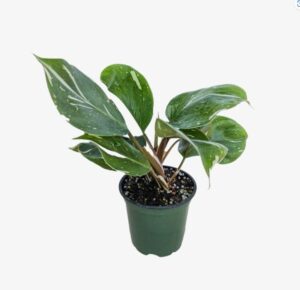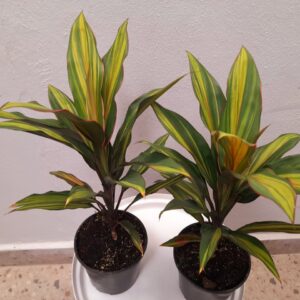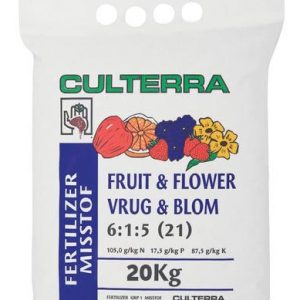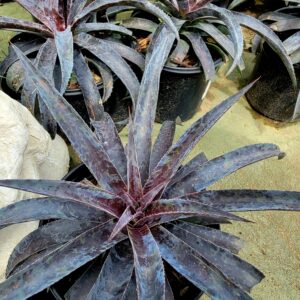The Philodendron White Knight stands out as one of the most sought-after houseplants among avid plant enthusiasts and collectors alike. Known for its dramatic and eye-catching foliage, this tropical beauty is native to the lush rainforests of South America, where it thrives in the dappled light beneath the canopy. Its striking white and green leaves make it not only a visual delight but also a conversation starter, adding a touch of exotic charm to any indoor setting. This guide will delve into the various aspects of cultivating and caring for the Philodendron White Knight, ensuring that you can enjoy its beauty for years to come.
Light Requirements
The light conditions for the Philodendron White Knight are crucial for its overall health and vibrancy. This plant flourishes in bright, indirect sunlight, which mimics its natural habitat in the rainforest. The ideal location for your White Knight is near a south or east-facing window, where it can receive ample light without being directly exposed to the sun's harsh rays. Direct sunlight can scorch the delicate leaves, leading to unsightly brown patches and overall stress to the plant. Conversely, if the plant is placed in a location with insufficient light, you may notice a decline in growth and a reduction in the vivid variegation that makes this plant so special. If you are concerned about the intensity of the sunlight, consider using sheer curtains or blinds to diffuse the light, providing the optimal growing conditions for your Philodendron.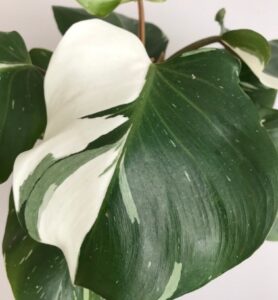
Watering Needs
When it comes to watering, the Philodendron White Knight has specific preferences that must be met to ensure its health. The plant enjoys consistently moist soil but does not tolerate soggy conditions. It is advisable to check the soil moisture regularly; allow the top couple of inches to dry out before watering again. The frequency of watering will depend on various factors, including the season, humidity levels, and the size of the pot. During the warmer months, you may find yourself watering more frequently, whereas, in the winter, the plant's growth may slow, necessitating less water. Always ensure that the pot has adequate drainage holes to allow excess water to escape, thus preventing root rot, a common issue that can plague houseplants if they sit in waterlogged soil.
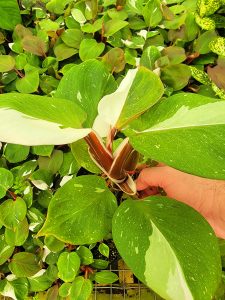 Humidity and Temperature
Humidity and Temperature
As a tropical plant, the Philodendron White Knight thrives in a humid environment, with humidity levels ideally ranging from 60% to 80%. In many homes, particularly during the winter months when heating systems can dry out the air, it may be beneficial to implement measures to increase humidity around your plant. Misting the leaves regularly can help, although it is more effective to use a pebble tray filled with water placed beneath the pot. This method allows for gradual evaporation, creating a micro-humid environment around the plant. Alternatively, investing in a humidifier can also be a wise choice, especially if you have multiple humidity-loving plants. Regarding temperature, the Philodendron White Knight prefers a warm environment, ideally between 18°C and 27°C. It is important to keep the plant away from cold drafts, air conditioning vents, or sudden temperature fluctuations, as these conditions can stress the plant and inhibit its growth.
Growth Rate and Dimensions
The growth rate of the Philodendron White Knight is considered moderate, with the potential to reach heights of approximately 60 to 90 cm and a width of around 30 to 45 cm under optimal care conditions. With the right attention, this plant can create a lush, eye-catching display in your home. Regular pruning is beneficial not only for maintaining the desired shape of the plant but also for encouraging bushier growth. By removing any damaged or yellowing leaves and pinching back leggy growth, you can promote a fuller plant that showcases its stunning foliage more effectively.
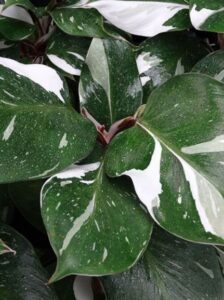 Differences Between Philodendron White Knight and Philodendron White Princess
Differences Between Philodendron White Knight and Philodendron White Princess
While both the Philodendron White Knight and the Philodendron White Princess are celebrated for their unique variegated leaves, they exhibit distinct differences. The White Knight is characterised by its more pronounced white patches on the leaves, often creating a striking contrast against the deep green backdrop. This dramatic variegation is a key reason why collectors value the White Knight so highly. In contrast, the Philodendron White Princess typically features a more balanced mix of green and white, with less pronounced variegation that gives it a softer appearance. Additionally, their growth habits differ; the White Knight tends to grow upright, making it suitable for those looking for a statement plant, while the White Princess often adopts a trailing or bushy appearance, ideal for hanging baskets or as part of a mixed plant display.
Propagation
For those interested in expanding their plant collection, propagating the Philodendron White Knight is a rewarding process. The most common method of propagation is through stem cuttings. To do this, select a healthy stem that has at least one node (a small bump where a leaf or root can grow). Using a clean, sharp pair of scissors or pruning shears, cut just below the node to ensure a clean cut. Ideally, the cutting should be around 10 to 15 cm in length and should have a few leaves attached. Once you have your cutting, remove the lower leaves to prevent them from rotting in the propagation medium.
You can propagate your Philodendron White Knight in either water or soil. If using water, place the cutting in a glass or jar, ensuring that the node is submerged while the leaves remain above water. Change the water every few days to keep it fresh and monitor for root growth, which may take a few weeks. Once the roots are about 5 cm long, you can transfer the cutting to soil.
If you prefer to propagate directly in soil, plant the cutting in a well-draining potting mix, ensuring that the node is buried. Water the soil lightly and place the pot in a warm, humid environment. To maintain humidity, you can cover the pot with a clear plastic bag or a humidity dome, making sure to allow for some airflow to prevent mould. After a few weeks, you should notice new growth, indicating that your cutting has successfully rooted.
Common Pests and Problems
Like many houseplants, the Philodendron White Knight can be susceptible to certain pests and problems. The most common pests include spider mites, aphids, and mealybugs. Regularly inspecting your plant for any signs of infestation is essential. If you notice pests, treat them promptly with insecticidal soap or neem oil, which are effective and less harsh alternatives to chemical pesticides.
In addition to pests, you should also be aware of potential issues such as yellowing leaves, which may indicate overwatering or insufficient light. If you observe yellowing, assess your watering routine and light conditions to determine the necessary adjustments. Conversely, if the leaves are turning brown and crispy, this could be a sign of underwatering or too much direct sunlight.
Overall, keeping a close eye on your Philodendron White Knight and addressing any issues as they arise will help ensure a thriving, healthy plant.
Conclusion
The Philodendron White Knight is a stunning addition to any indoor plant collection, renowned for its unique variegation and striking appearance. With the right care, attention to detail, and a bit of patience, you can cultivate this beautiful plant to its full potential. By understanding its light, water, humidity, and temperature requirements, as well as being proactive about pests and propagation, you can enjoy the beauty of the Philodendron White Knight for many years to come. Whether you choose to display it as a statement piece or incorporate it into a larger plant arrangement, this tropical beauty is sure to elevate your home décor and bring a touch of nature indoors.
